Ineos Grenadier Quartermaster First Drive Review: Dripping in character, damned by chickens
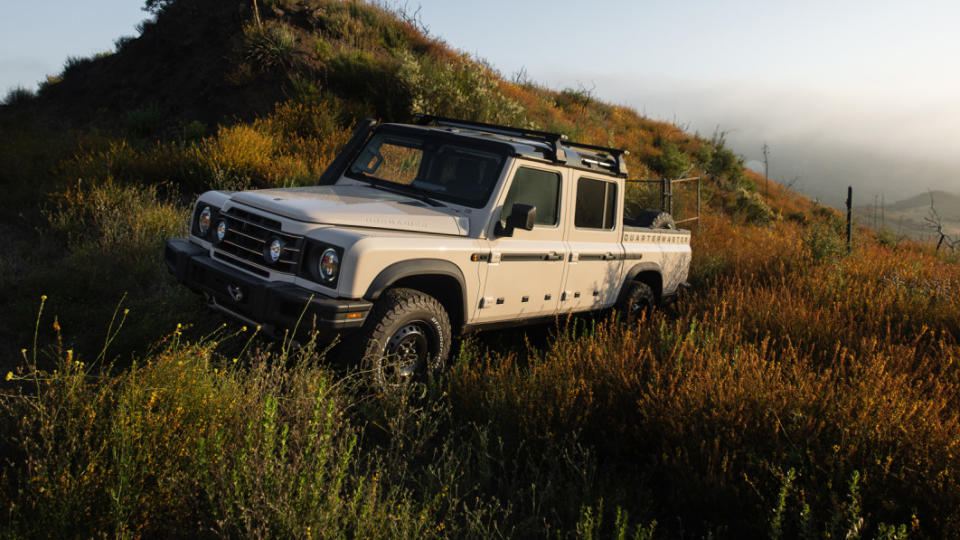
JOSHUA TREE, Calif. – Subjectively, the 2025 Ineos Grenadier Quartermaster is a deeply lovable truck. It is dripping in character, from the bank of cockpit-style switches on the dash and ceiling console to the name itself. You know you’ve got something interesting when answering “What car is that?” stretches to 10 syllables. For those longing for an even simpler, more analog off-roader than the Wranglers, Land Cruisers and G Wagens of this world provide, it proudly flies its old-school flag packing front and rear live axles, recirculating ball steering, high and low range selected with a sturdy shifter, and multiple locking diffs. If you see some sand ahead and feel the need to turn a dial to an icon with a little cactus on it to get you through, the Quartermaster isn’t your truck.
Objectively, however, the Quartermaster probably won’t be your truck for a whole lot of other reasons. Price is the big one. It starts at $86,900, or $15,400 more than the Grenadier SUV or “Station Wagon” as Ineos calls it, inevitably to the confusion of every American. You can read more about that version in our Grenadier first drive review. The reason for the Quartermaster premium has little to do with the frame and wheelbase that’s a foot longer, nor the 61.5-inch-long bed that stretching accommodates. No, the blame goes to West Germany, Lyndon B. Johnson and chickens.
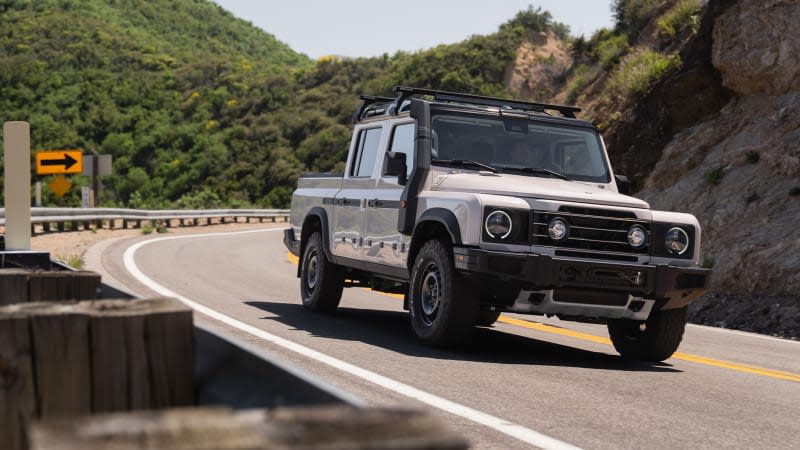
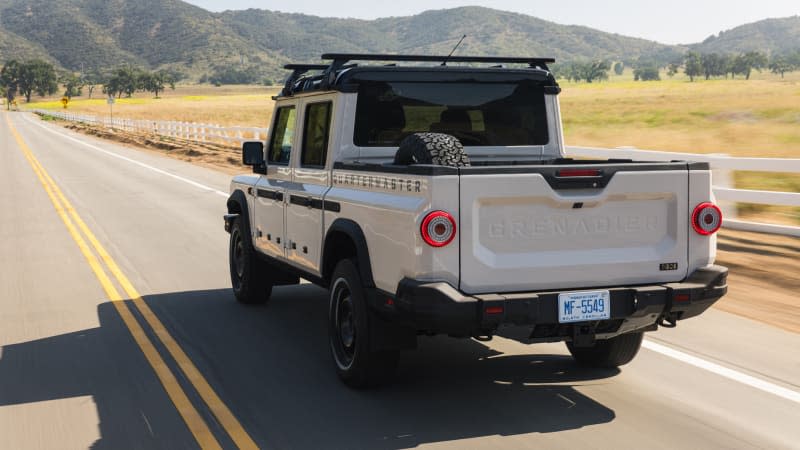
Back in the early 1960s, the Johnson administration responded to French and West German tariffs placed on a variety of American products, most notably chickens, with a 25% import tax. The United Auto Workers, meanwhile, wanted to curtail the importation of West German-made Volkswagen commercial vans and pickups, and effectively negotiated with the Johnson administration to apply the chicken tax to such commercial vehicles in exchange for not striking. The auto industry would continue to lobby for its application long after chicken tax tariffs were lifted on other products, thereby making it much harder for Japanese companies, particularly in the 1980s, to import its small trucks.
Companies have circumvented the tax in various ways over the years, but Ineos doesn’t feel the need to do so for the Quartermaster, which is built in Hambach, France, in an old Smart factory. The result is a pickup that’s not only far more expensive than its nearly identical SUV sibling, but one that can easily stretch past $100,000 with a reasonable selection of options. It doesn’t feel like it should. Admittedly, there’s no other pickup of its size and power source (gasoline versus electric) in that price range, nor does another off-roader of that price tag offer a pickup bed. Still, it’s a tough pill to swallow.
At least here in the United States. In Australia, the Quartermaster should have no problem finding homes. Its relatively narrow width and short bed, not-palatial crew cab and old-school off-road capability perfectly match the modern definition of the Aussie “Ute.” Indeed, Ineos anticipates 80% of Grenadiers sold Down Under will be either Quartermasters or the chassis cab variant we won’t get.
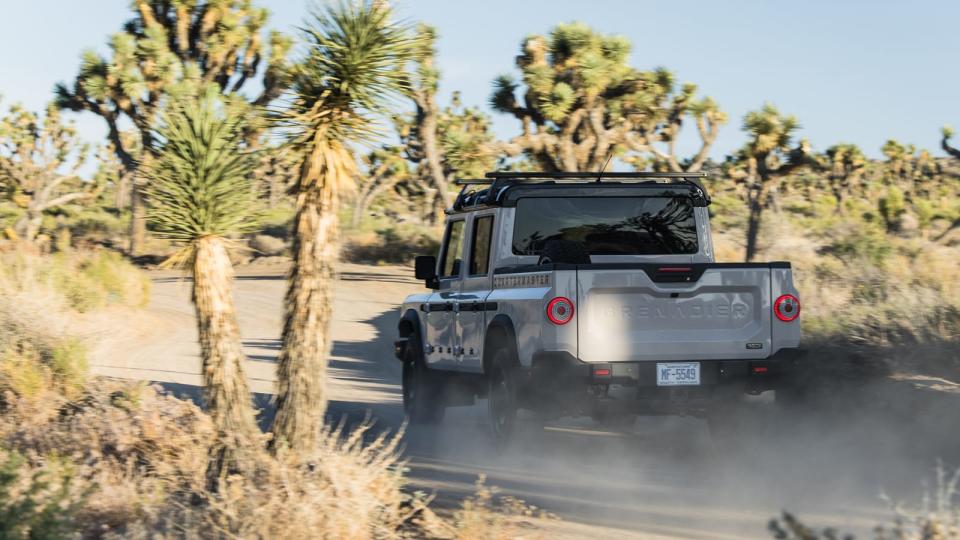
The American venue chosen to showcase the Quartermaster could certainly be mistaken for Australia, albeit with beige dirt instead of red, and Joshua trees in lieu of eucalyptus. We’re tackling dusty, rocky trails just outside Joshua Tree National Park, often at a decent clip that has the sturdy Grenadier proving resilient to the vicious vibrations caused by washboard surfaces and the solid thwacks of big heaves.
The recirculating ball steering rack is the Grenadier’s most controversial element, a fact telegraphed by how often the folks at Ineos seem to bring it up. There have been potential customers who said “no thanks” after giving it a try, no doubt finding the dead on-center feel, lack of self-centering and stiff turn-in disconcerting and totally different than modern rack-and-pinion systems, typically with electric power assistance. Younger drivers in particular, who may never have driven a car without EPS let alone a recirculating ball setup, should find it particularly foreign. They also may find it novel, just one of many throwback, analog sensations expected for not only the Grenadier but off-roaders in general.
I personally didn’t find it that big of deal, and it’s certainly not as agricultural as I was expecting. The biggest issue is on-center corrections at highway speeds, as well as sudden turns. There was a point while driving at a higher speed in convoy with other Quartermasters that the dust ahead cleared to reveal a sudden right-turn and a metal fence beyond. Quick decision! I yanked the wheel to the right to be met by a wall of resistance that wouldn’t be there with other steering systems. I muscled the two-spoke wheel even further and harder, while hitting the long-travel brake pedal. Fence avoided, worst case experienced.
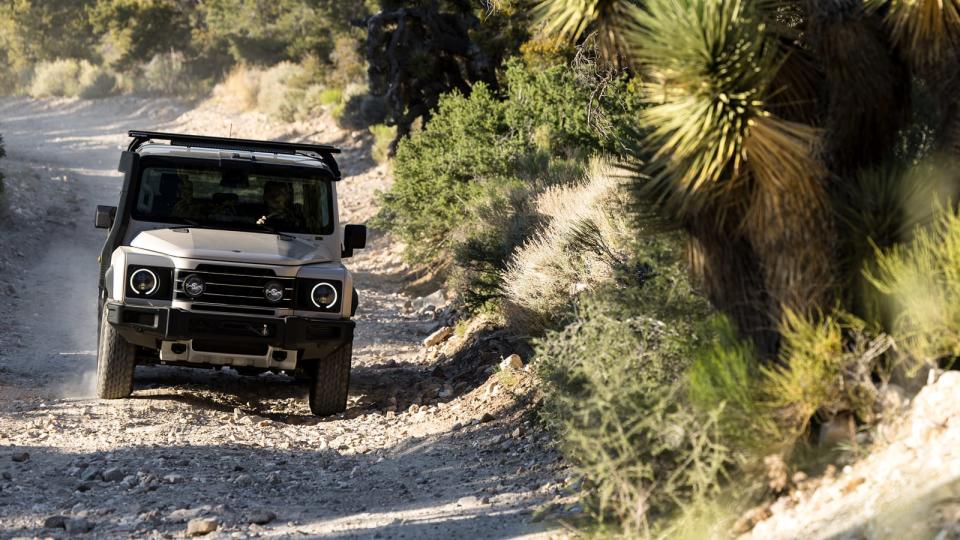
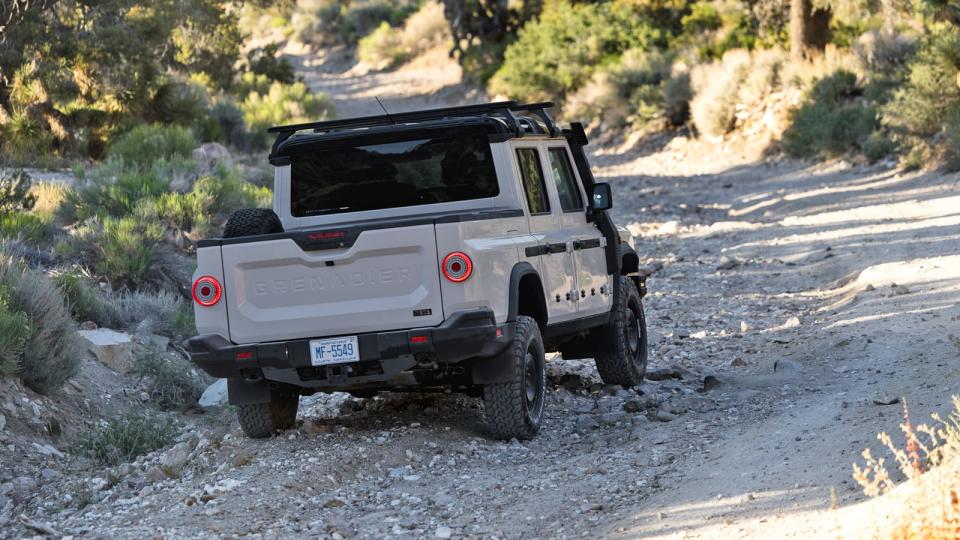
So why bother with ye olde steering? Well, we also did some mountain goating. I’ve long been trained to not wrap my thumbs around the steering wheel spoke while off-roading, as sudden kickback can, well, break them. That’s a rack-and-pinion thing. It’s far less likely to happen with recirculating ball, and indeed, our rock-crawling stints were easy-cheese from a steering perspective.
The throttle could be difficult to modulate in such situations, however. There’s not much reaction with initial throttle tip-in and the delay in response created some anxiety that I’d over-gun it and launch the Quartermaster into a boulder. I didn’t, but finer pedal feel or a change in throttle application would be appreciated.

 Yahoo Autos
Yahoo Autos 